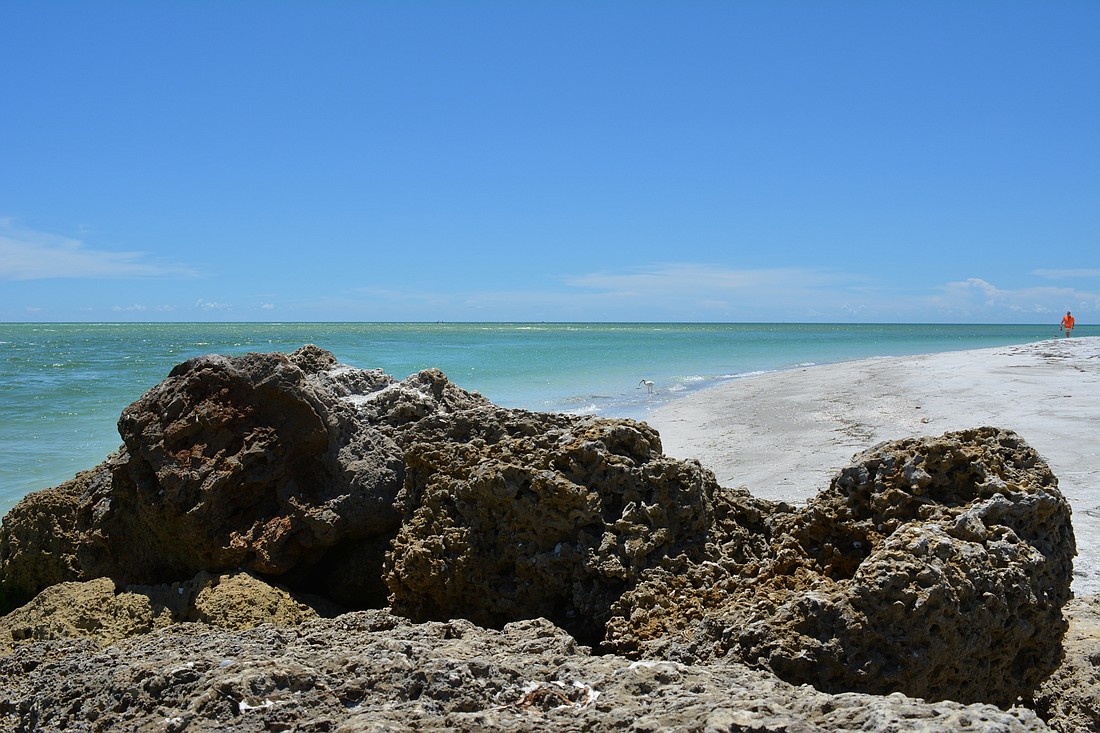- May 1, 2025
-
-
Loading

Loading

At a Kiwanis Club of Longboat Key meeting earlier this month, Public Works Director Juan Florensa presented an update on the island’s sand situation.
The big question from attendees: Why can’t the town dredge the sandbars and shoals along Key shorelines?
And it’s not just those in attendance who are wondering.
“Certainly the technology is there, and certainly the entities that do it exist,” said Steve Madva, president of the Country Club Shores Association and a Planning and Zoning Board member, in a phone interview with the Longboat Observer. “I think it should be looked at.”
There’s so much sand on the south shoal — a sandbar near inlets between Lido and Longboat keys — that Florensa can’t even estimate the number of cubic yards. Further south, another large shoal is located at the tip of Big Pass, and has more than 23 million cubic yards of sand.
As for why all that sand can’t be used, the answer is: It’s complicated — a product of regulations, potential litigation and undulation (i.e. wave action).
The sandbars along the shoreline, which are mainly composed of sand that has washed away from previous beach projects, they are still technically part of the beach. Though residents and tourists can’t necessarily lay a towel down or play volleyball on the underwater sand, they still serve Florensa’s No. 1 goal: protecting upland homes and infrastructure.
“They’re like speed bumps,” said Florensa, describing sandbars and how they reduce waves’ energy as they wash up to shorelines on the island.
As for simply dredging the shoal that sticks out north of New Pass?
“It can be economically feasible, except for us, it’s a small amount, and we really need a lot more,” Florensa said. “Even if you successfully persuade the regulatory agencies to let you to do that, you’re still going to get some backlash from the adjacent owners.”
Case in point: Save Our Siesta Sand 2, a group that organized to protest the planned dredging of the Big Pass shoal for a Lido Beach renourishment, has threatened to sue the U.S. Army Corps and the city of Sarasota. The group has held town hall forums attracting hundreds of concerned citizens, and hired experts to refute claims that pulling 1.3 million cubic yards from the inlet will be harmless to the environmental system.
Lido Key property owners could find themselves in the same position as Siesta residents if the town ever pursued the dredging of the New Pass shoal, even though it is smaller than Big Pass.
“Their beach on the north end is pretty substantial at this point, and I don’t know that dredging would affect them dramatically,” Madva said. “They’re still going to get sand blown onto their beach — probably coming from ours.”
Technically, the town will be dredging a portion of the shoal when it opens up New Pass and pulls 200,000 cubic yards of sand during an upcoming renourishment project. But the route through the shoal, which is authorized by the U.S. Congress as a navigational channel, doesn’t cut through the most substantial northern portion of the horizontal sandbar.
For the town to get approval to change that route in future navigational dredges, it would require extensive permitting and analysis from the Florida Department of Environmental Protection.
Still, there’s too much uncertainty to determine whether a new federally authorized route through New Pass would actually generate more sand. In fact, the Army Corps could identify a better navigational route that bypasses the shoal altogether.
“We’re sand people, so dredging through that shoal has a benefit for us: We get that sand,” said Town Manager Dave Bullock. “It’s a little bit like a spider web — when you touch one side of it it’s felt throughout the web.”
However, the town will look at possible new options for mining sand from New Pass for future projects because inlet dredging is the cheapest option for beach renourishment. (See graphic, above.)
Longboat, the city of Sarasota and, potentially, Sarasota County will pursue an inlet management study to determine if there are other opportunities to pull more sand out of New Pass and the safest way to do so without environmental impacts. That analysis, which the West Coast Inland Navigation District may support with funding, could cost more than $100,000.
“Sticking a pipe in and sucking sand up — it sounds good, it would feel good and it would be great,” Bullock said. “But there’s not a dredger on earth that would put a pipe in there until you produce a permit and a plan.”
And even if the town secures the permits necessary to dredge the shoal, it could actually accelerate erosion on the most vulnerable beaches on the Key.
“When you excavate the shoals you create a hole,” Florensa said. “It becomes a trap for sand.”